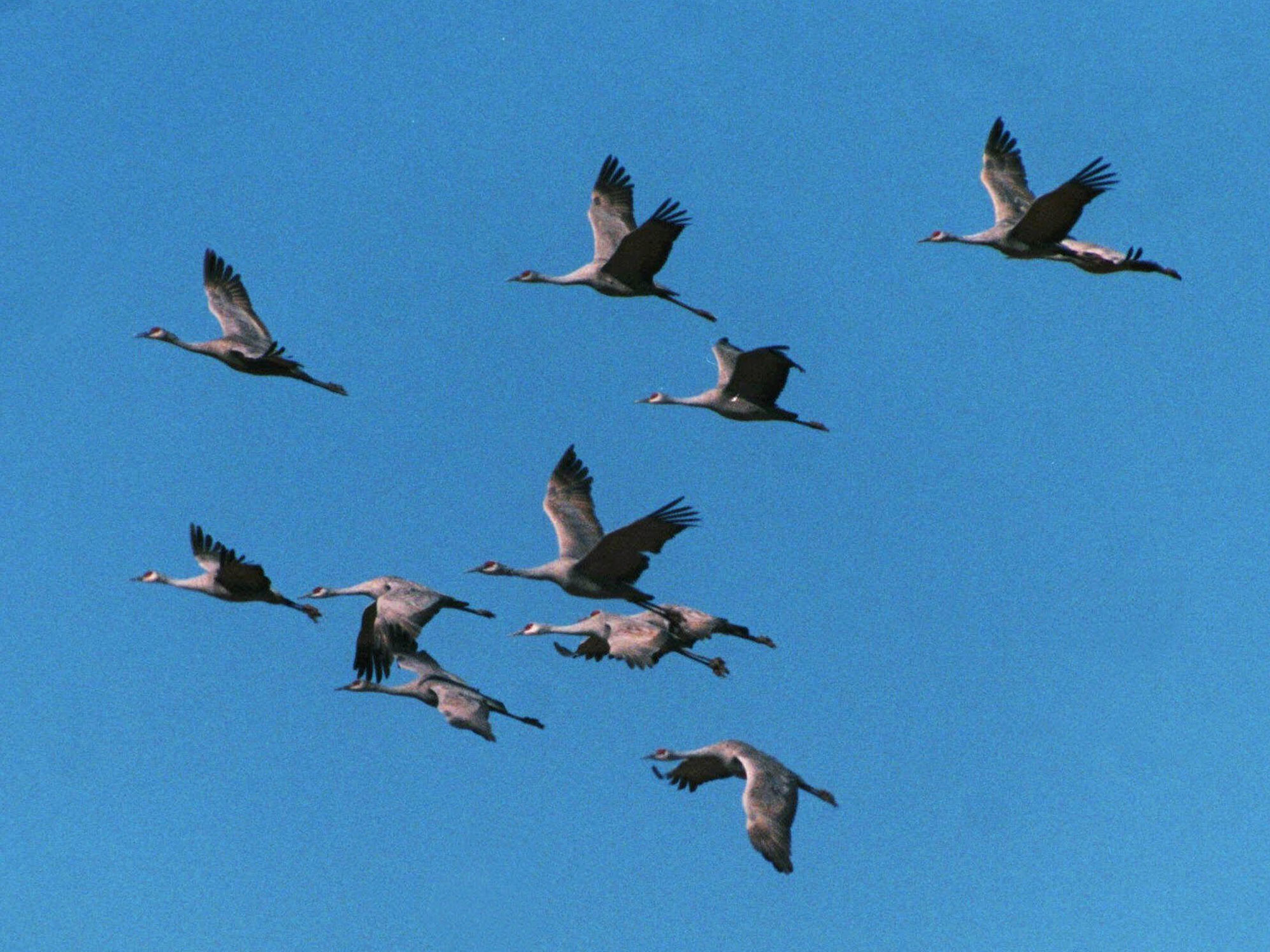![flying-birds [ID=4497591]](http://moc-assets-prod.gannett-cdn.com/-mm-/3d5569507733ca056af5edaf0a2a8036c559fb13/r=500x375/local/-/media/WMAZ/WMAZ/2014/01/15/1389826077000-flying-birds.jpg)
Flying birds often arrange themselves into a crisp, perfect V, so why not an S? What's wrong with M and B and the other neglected letters?
Now the first extreme close-up of birds flying in a V formation is providing some answers. Scientists have found that birds position themselves and time their wing beats so perfectly that, according to aerodynamic theory, they minimize their energy use. It's a task that requires each bird to monitor subtle changes in its wing mates' flight and alter its own path and stroke accordingly.
The new results "once again remind us that animals are much more complicated … than we often give them credit for," says Kenny Breuer, a professor of engineering and ecology at Brown University who was not involved with the study. "They're reacting in very sophisticated ways to maintain these V formations."
Aircraft can save fuel by flying in a V, leading scientists to predict how closely bunched birds in a V-shaped flock should be to save the most energy. But it's no easy feat to measure the coordinates of a bunch of geese or gulls flying fast and high overhead. "It's not something you can do with a pair of binoculars and timing it 'one Mississippi, two Mississippi,' " says study author James Usherwood of Britain's Royal Veterinary College.
The invention of highly precise, lightweight GPS units and other sensors a few years ago finally made it possible to find out exactly what birds are up to in flight. For test pilots, the researchers turned to northern bald ibises, a highly endangered species raised in captivity in Austria for reintroduction to the wild. Every year a flock of the ibises takes to the air escorted by a skeletal aircraft known as a paraplane – "two chairs with a hairdryer on the back and a parachute," jokes study author Steven Portugal, also of the Royal College – that carries the birds' human foster parent and a world-class pilot.
The ibises made the perfect collaborators. They were accustomed to wearing harnesses, which made a handy place to hang the sensors, and they met their foster parents at the end of every flight, allowing easy access to the instruments. When the researchers analyzed the data from 14 young ibises flying in a V, they found that each ibis placed itself an average of four feet behind the bird in front of it and at an average angle of 45 degrees. That's just the configuration needed for individual birds to catch the rising air generated by the flapping of the bird in front of it. By capturing this rising air, or "upwash," the bird stays aloft more efficiently.
But the birds do more to save their strength than simply choosing the right spot. Measurements of the ibises' flaps showed the birds time their wing beats so precisely that they continually catch the upwash left behind by the moving wings of the guy or gal ahead. That means a bird regulates its stroke so its own wingtips trace the same path in the sky as the bird in front. If a bird happens to get a little closer to or farther from the bird it's following, it instantly adjusts its wing beat accordingly, the researchers report in this week's Nature.
The researchers "were completely surprised," Portugal says. "It's amazing how quickly they can respond to any changes (by) the bird in front."
While the findings don't show directly that the birds are saving energy, they almost certainly are, says aerospace engineer Geoff Spedding of the University of Southern California, who was not involved with the study.
"Otherwise, what's the point of following … with such precision?" he says. "If you're in the right position, the energy savings come almost automatically."
He and Breuer praise the new research for finally confirming theories that have languished without evidence for decades.
"To capture that data from the flight of birds in the wild is phenomenal … more than anyone could've hoped for from a live experiment," Breuer says. "It's just reassuring that (the birds) are doing everything they should be doing to save energy."


